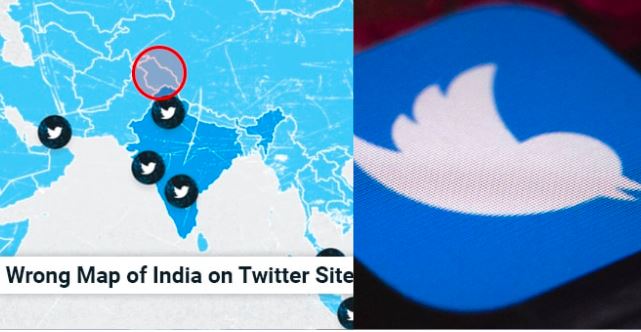Twitter is demanding the stick. Twitter wants it really bad. What else explains Twitter’s self-manufactured run-ins with the Government of India? From not complying with India’s IT and social media rules to showing a brazen disregard for Indian laws, to historically fudging India’s territorial boundaries – Twitter has done it all. The left-leaning microblogging platform’s fate in India hangs in the balance, and the Modi government’s patience is beginning to wear thin. In the latest news, Twitter has appointed a US citizen and executive based out of San Francisco as the grievance redressal officer in India.
Additionally, Twitter considers the entirety of Jammu and Kashmir and Ladakh as territories, that do not belong to India. The same was made clear by the social media company as it decapitated India’s crown and showed Jammu and Kashmir as a separate country and Ladakh as a part of China. At a time when India and China are locked in a military standoff in Eastern Ladakh, by showing the Indian Union Territory as a part of China, the left-leaning platform has made its support for Chinese expansionism abundantly clear.
The ‘careers’ page of the Twitter website, under the “Tweep Life” header, depicted the incorrect Indian map. After the distorted map came under public scrutiny and triggered a massive furore on Indian social media, Twitter on Monday night removed the global map completely from the webpage. This is the second time Twitter has misrepresented India’s map. In October last year, the Centre had served Twitter with a notice over the geotag for Leh showing it as a part of China.
For distorting India’s territorial boundaries and showing sovereign Indian territories as a separate country and a part of China, Twitter India’s Managing Director, Manish Maheshwari, who is “trying to run a business” here has been booked under Section 505 (2) of IPC and Section 74 of IT (Amendment) Act 2008. This comes after a complaint by a Bajrang Dal activist of Bulandshahar.
Meanwhile, Twitter’s woes are hardly limited to its top executive in India getting booked. The microblogging site had appointed a Grievance Officer for India recently, in line with the new IT rules. However, Twitter had appointed Dharmendra Chatur, partner at a law firm that represented Twitter, as the interim officer for the role. The Centre had back then too made it clear that it would not accept the appointment of outsiders to statutory posts.
Dharmendra Chatur offered a sudden resignation from the post on Sunday. One would have thought that Twitter would comply with the IT rules mandate of appointing a full-time Grievance Redressal officer at least now. However, the platform was not just yet done flouting Indian laws. This, at a time when Twitter India has reportedly still not employed two separate nodal and compliance officers, as demanded by the new rules.
Instead, Twitter went on to appoint its California-based global legal policy director Jeremy Kessel as the new grievance officer for India in an attempt to fulfil the criteria under the new Information Technology Rules, 2021. However, the rules demand that an Indian, based out of India be employed for the role. So, the microblogging platform is practically giving more ground to the Centre to take it to task.
Twitter is no longer granted an intermediary status in India. As such, it is liable to be prosecuted under relevant sections of the law for any hateful and illegal content posted on its platform. It is liable for the prosecution now, and the barrage of cases that Twitter India is now facing speak to the same effect. Perhaps, if Twitter had behaved itself from the very beginning, and shed its sovereign attitude, it would not be facing the wrath of the Indian government and law enforcement.
